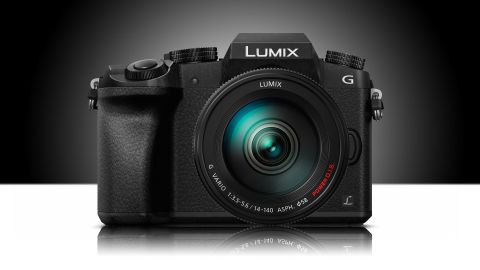Why you can trust TechRadar
It's unlikely that G6 users will feel tempted to upgrade to the G7, and some may feel that the changes brought by the new camera are a little pedestrian and predictable. Nevertheless, the G7 is a very capable camera that produces high-quality images. It also showcases a feature that's likely to become more relevant to photographers over the next couple of years – 4K recording and the ability to extract 8Mp still images.
While the 4K Burst Shooting and 4K Burst (Start/Stop) modes may seem the most practical uses of this technology, experienced stills photographers who are used to timing shots carefully may be more attracted to 4K Pre-burst mode. This mode records at 30 frames per second for just two seconds, one before the shutter release is pressed and one after, capturing 60 images in total. This should be sufficient to capture the desired bit of the action, and it provides scope for selecting the perfect moment/expression without giving the photographer hundreds of images to scroll through to find the ideal shot.

4K Burst (Start/Stop) mode is especially useful for solo photographers shooting dynamic scenes such as water being poured over an object or subjects being dropped. With the camera mounted on a tripod, recording can be started before the photographer creates the movement in the scene, and once the action has played out recording is stopped with a second press of the shutter release.
One downside to using 4K Photo mode is that it turns a 16Mp camera into an 8Mp camera. However, according to Panasonic we can anticipate 8K recording with 33Mp stills by the time of the Tokyo Olympics in 2020 – that's going to take a huge leap in sensor technology from Panasonic.
We liked
The G7 has all the features we like in a compact system camera; a vari-angle touch-sensitive screen, a high-quality electronic viewfinder and a snappy autofocus system, along with a decent sensor. As a member of the Micro Four Thirds family there's also an extensive collection of lenses, from Olympus and Panasonic as well as some third-party manufacturers.
We disliked
While it has all the controls we'd expect, the G7's build quality is lacking in comparison with Fuji's X-series and Olympus's OM-D range of compact system cameras. It's not badly constructed, but it has a lightweight and plastic feel that won't entice enthusiast photographers. The autofocus system is excellent for shooting still subjects, but it struggles to follow fast-moving objects around the frame unless you're able to keep the active AF point in the right position.
Verdict
Although it lacks any real wow factor, the Panasonic G7 produces high-quality 16Mp images and offers one of the most well-rounded feature sets in its field, with a high-quality OLED viewfinder, a vari-angle touchscreen and Wi-Fi connectivity. Some photographers are dismissive of vari-angle screens and touch control, but both can promote creativity by encouraging photographers to shoot from a wider range of angles and look for a different perspective. Similarly, the 4K Photo modes extend creativity and inject a bit of extra fun into your photography – albeit at the cost of a halving of image size.

